Champions of Change Blog
Conquering Darkness and Harnessing the Sun
Posted by on June 4, 2013 at 11:47 AM EDT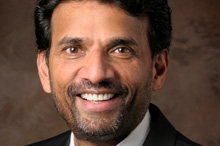
Siva Sivananthan is being honored as a Champion of Change for his accomplishments as an immigrant entrepreneur and innovator.
I am honored to have been named a White House Champion of Change. Though this recognition has been bestowed on me, this honor belongs to all those who shaped and enabled me to succeed, including my family, university, community, my country of birth, Sri Lanka, and the United States of America.
My journey began in Chavakacheri, Sri Lanka, where I was the sixth of nine children born to humble, hard-working schoolteachers. After being raised in a loving household that valued education above all else, I departed Sri Lanka for the United States in 1982 to study physics at the Microphysics Laboratory (MPL) at the University of Illinois at Chicago (UIC).
At UIC, I obtained my Master’s and Ph.D. in physics. More importantly, at this urban university that encouraged its faculty to engage and help its surrounding community, I learned “service to others” and found the path through which I could best serve America. In 1994, I became the Director of MPL and made it my mission to pioneer the growth of an infrared-detecting material, mercury cadmium telluride (MCT), used for high performance night-vision cameras in military and space applications. Through dedication, commitment, and passion, and with the strong support of UIC, the MPL team pioneered the molecular beam epitaxial (MBE) growth of MCT, allowing it to become the dominant material in infrared (IR) night-vision technology.
In 1998, I founded companies to assist in the further development and incubation of the IR technology I helped develop. The resultant IR technology, including night-vision capability, has become a cornerstone of U.S. defense, and has saved the lives of thousands of our warfighters. In 1991, at the end of the First Gulf War, General Barry McCaffrey said, “Our night vision capability provided the single greatest mismatch of the war.” In 2005, I received the honor of being presented the “Friend of the Night, Conquest of Darkness” award by the U.S. Army Night Vision Laboratory. In 2011, given the accomplishments of my MPL team and myself, I was named Liberal Arts and Sciences Distinguished Professor of Physics at UIC.
Today, the same material that was developed for night vision military capabilities, namely cadmium telluride, is now the basis of one of the world’s leading solar technologies. Our MPL team has dedicated a great deal of research to lowering the cost of solar energy in order to create inexpensive, inexhaustible, and renewable electric power. In Illinois, where we have rich talent to further develop solar technology, I helped found the nonprofit organization InSPIRE (the Institute for Solar Photovoltaic Innovation, Research, and Edu-training). InSPIRE is helping to nurture a solar ecosystem in Illinois by exciting high school and college students to enter the field. Given the terrific human and manufacturing capital in the Midwest, I envision America’s heartland becoming a hub for solar technology, providing good-paying jobs to thousands of workers. I am committed to making this dream a reality.
As a faculty member at an urban campus of a state university, I have considered it my responsibility to help children in Chicago obtain a good education. To that end, I have established programs and scholarships to assist students, science teachers and student clubs at local schools for science, technology, engineering, and mathematics (STEM). In addition, inspired by the famous Bell Labs, I created a high-tech incubator, Sivananthan Laboratories, to nurture innovative small businesses focused on science and technology, thereby promoting economic growth in Illinois and the United States. America has given so much to me and my family. Now, in my own modest way, I view it as my mission to give back.
Siva Sivananthan a College of Liberal Arts and Sciences Distinguished Professor and Director of the Microphysics Laboratory at the University of Illinois at Chicago.
Learn more about InnovationsA Passion for Life-Saving Innovation
Posted by on June 4, 2013 at 11:43 AM EDT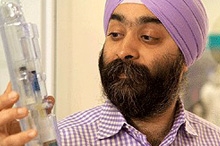
Amar Sawhney is being honored as a Champion of Change for his accomplishments as an immigrant entrepreneur and innovator.
I find myself today where I am through a series of happy accidents and some deliberate decisions. I really enjoy what I do, which is innovate in the field of medical devices and biopharmaceuticals, by using my education as a chemical engineer specializing in biomaterials. I look back today in satisfaction at having helped create several medical devices that are helping millions of patients. However, how I ended up here was far from a sure thing. In fact, being an immigrant created roadblocks early on in my career, that in a strange way helped propel me in a direction that I otherwise may never have taken, had things come easier to me.
I came to the United States in 1987 from India to pursue my graduate studies in Chemical Engineering at the University of Texas. Unlike many immigrants, I was not fleeing persecution or economic stagnation. I had a good job in hand in India, so selecting the United States for graduate studies was a deliberate choice that I made to explore a new country and get a great education. I proceeded to get my Master’s degree and looked for a job through campus placement. I applied to 30 positions and within a month was looking at 30 rejection letters, all because I lacked a green card. This was a shock to me, as I had never encountered such abject failure in the past!
The safe thing would have been to go back to India where I could surely get a job, but seeing as I liked research, I decided to double down and get my Ph.D. This turned out to be a seminal move, as my academic advisor and I invented some very cool technology. We invented methods to do super fast chemical reactions to build materials on living cells and tissues, without harming them in the least bit. This opened up some wide new horizons for the field of tissue engineering. We were approached by a California-based venture capital fund that wanted to start a company using our technology. I remember thinking then that only in the United States would someone funnel millions of dollars into the idea and dreams of a 25-year-old kid!
This and other technology I have been fortunate enough to invent with my team members went on to have major impact. We created the first sealants for lung surgery, brain surgery, and spine surgery, and other sealants for vascular and cardiac interventions. This technology is helping improve outcomes of lung and breast biopsies, decrease scar formation post-surgery, decrease radiation toxicity to healthy organs following cancer radiotherapy, create drug delivery systems for ophthalmology, treat people with abdominal aneurysms, and more. The applications seem to be endless and we are continuing to eagerly solve new challenges each day.
Early on, I realized that to most fully deploy the technology, scalability would be needed. There was no way to do all the things one wished to do, without creating some sort of a platform for entrepreneurship. My business partner and mentor, Fred Khosravi, and I decided to form Incept, an organization that would enable entrepreneurship. This was not the typical incubator. We felt that money and space were commodities, while what entrepreneurs really needed was “intellectual capital.” This sometimes meant technology and sometimes meant business expertise. We have since worked with several bright and hardworking colleagues, and now Incept has created more than a dozen companies and continues to launch at least one new company every year. Incept companies tackle challenges from sales and marketing analytics, to devices that filter blood clots during cardiac stenting, to heart valves that can be replaced without open surgery.
More importantly, we have ended up creating a community of people that include other entrepreneurs, employees, physicians, and service providers who we love working with and who share our values. We subscribe to a value system that places solving significant medical needs at the apex, working with good people next, and finally hopes to realize economic value too. We are careful not to ever invert this value system, which could corrupt our actions.
I feel humbled and privileged to have the opportunity to do what I do. I realize that nowhere else in the world would I have been able to launch into an entrepreneurial career, the way that I did, except in the United States.
Amar Sawhney is President and CEO of Ocular Therapeutix.
Learn more about InnovationsWho Dares, Wins
Posted by on June 4, 2013 at 11:38 AM EDT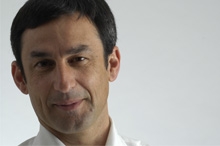
Zack Rinat is being honored as a Champion of Change for his accomplishments as an immigrant entrepreneur and innovator.
I was born and raised in a rural town in Israel called Ness Ziona. At the age of 18, I was drafted into the Israeli Special Forces, where I rose to the rank of Captain. The military taught me invaluable lessons in leadership, management, and camaraderie. The motto of my unit–Who Dares, Wins—became a guiding principle for me.
When I completed my military service, I enrolled in the Technion (Israel Institute of Technology) and pursued a Computer Science degree. After graduation, I designed real-time mission critical systems as a programmer, software architect, and project manager. One of the projects I worked on was cancelled after we lost government funding. This made me realize I wanted to start an entrepreneurial career so that I could control the context of my work and my own destiny. I decided that pursuing an MBA and being immersed in the U.S. business culture would be the best way to transition my career. I applied to only one school, Harvard Business School (HBS), and was thrilled when I got in.
I moved to the U.S. with my wife and newborn, bringing only a few suitcases, great hopes, and little knowledge about the U.S. —and completely underestimating what a challenging and rewarding experience it would be for a young Israeli family. We were fortunate to have family in Boston and American classmates who supported us and taught me about suits, ties, and American business practices, and taught my family about Thanksgiving and many other American traditions. I was also fortunate to have some of the best business professors in the world—like Michael Porter, David Garvin and Bill Sahlman—who introduced me to entrepreneurship. HBS was a transformative experience for me, and I feel privileged to have had the opportunity to attend school there.
After graduation, I moved to Palo Alto, California to work for Silicon Graphics (SGI). As an engineer, I always dreamed of working in Silicon Valley, in close proximity to iconic technology companies such as HP and Intel. At SGI, I had an opportunity to practice and hone my leadership and management skills in an innovative, intense, and inspiring environment. I was given opportunities to grow and to contribute.
In 1995, my wife was in the process of forming a new venture with two Israeli immigrants whom she had met at the Jewish Community Center. She introduced me to these engineers and we decided to commercialize their idea to develop Internet software. Ofer Ben-Shachar, Doron Sherman, and I started NetDynamics with no external money, subletted office space, volunteer employees, and great anticipation. In an unexpected but incredible way, everything began to fall into place. A fellow HBS grad introduced me to Mark Gorenberg of Hummer Winblad Venture Partners, who was the first to see the vision and invest. Another HBS classmate introduced me to legendary Intel CEO Andy Grove, who invested as well. My HBS classmates made further introductions, experienced entrepreneurs gave advice, and friends pitched in. We were able to raise three rounds of venture capital money and funds from individual investors such as Google Chairman Eric Schmidt. NetDynamics ultimately gave birth to the market for Java Application Servers and created a large industry around it, including system integrators, resellers, and competitors. NetDynamics had more than 700 customers, became a driving force in this new space, and was acquired by Sun Microsystems in 1998.
In addition to being an entrepreneur and CEO, I was able to leverage my experience to support two companies that were founded by friends of mine. In 1998, I helped a friend launch TradingDynamics and served as a founding member of the Board. TradingDynamics created a business-to-business (B2B) auction platform that attracted Ariba, which bought the company about a year after launch. In 2005, I helped a high school friend of mine to start Conduit, which became Israel’s largest Internet company through a partnership with Google that matched audience acquisition to search. I was the first external investor at Conduit and served as the Chairman of the Board from 2005 to 2011.
My newest venture, Model N, is my proudest achievement. I founded Model N in 1999 with a team of employees and customers from NetDynamics. The founding team included immigrants from Turkey, Hong Kong, and Israel, as well as American-born colleagues. Model N’s enterprise-grade software solutions help companies maximize revenue captured through pricing, contracts, incentives, and rebates by championing the new discipline of Revenue Management. Revenue Management—a software space we created—drives how some of the world’s largest companies get paid, from setting up their commercial strategy, to executing complex contracts and pricing every day. Our solution is based on the premise that big legacy systems and old processes left an unsatisfying gap in the way the world captured revenue. We unlock billions of dollars of revenue potential that our customers can reinvest in their core businesses, which include life-saving drug discovery and amazing new technologies. We employ over 600 people worldwide, and thousands of consultants, partners, and customers work in our ecosystem every day. Our solutions help improve revenue results for some of the biggest brand names in life sciences and technology.
I am proud to say that we took the company public on March 20, 2013, and we are now traded on the New York Stock Exchange under the symbol MODN. However, none of this would have been possible without a great team, great customers, and sage advice from Silicon Valley luminaries who invested both their time and money to help this vision come to fruition.
The Champions of Change award is a great honor, but as they say, “with great honor comes great responsibility.” These days my wife Orli and I are thinking a lot about legacy. Orli is a full-time philanthropist in our community, and I concentrate on leading by example to pass on the lessons I have learned as a serial entrepreneur. I often tell people that the key to success is being “all in.” The hardest part is getting to that mindset where there is no plan B—like my single application to Harvard, or like starting NetDynamics with no funding. Shred your plan B. Who Dares, Wins.
Zack Rinat is Founder and CEO of Model N.
Learn more about InnovationsA Nation of Entrepreneurial Journeys
Posted by on June 4, 2013 at 11:34 AM EDT
Victoria Ransom is being honored as a Champion of Change for her accomplishments as an immigrant entrepreneur and innovator.
Growing up on an asparagus farm in rural New Zealand, I never dreamt I’d one day come to the United States and build a company like Wildfire. I certainly never imagined I’d one day be honored by the White House.
My transformation into an entrepreneur started with my scholarship to attend an international school in New Mexico at the age of 17. This led to me staying in the U.S. for college and then taking a job where I was exposed to a number of entrepreneurs looking for financing. Thanks to this experience, I saw people around me taking chances, making mistakes and learning from them, and being respected for it! The U.S. culture of encouraging innovation, big thinking, and risk-taking, and respecting people for trying even if they fail, inspired me to embark on my own entrepreneurial journey.
I was joined in this entrepreneurial adventure by my then-partner (now husband), Alain Chuard, who had also come to the U.S. for college. Alain’s from a family of Swiss entrepreneurs, and we both saw a place where people with good ideas and a strong work ethic could win. We wanted to build a business here, but our visas did not allow for this, so we returned to New Zealand to start what turned out to be a successful adventure travel company, Access Trips.
In 2007, we returned to America to deepen our education. Alain enrolled at Stanford Business School and I set off for Harvard. During graduate school, we launched a marketing software company called Wildfire. You could say we were lucky to be in the right place at the right time, but we worked very hard to build relationships with Silicon Valley’s great network of innovative people. We met with venture capitalists, and we studied the great technological advancements happening at companies like Facebook, Twitter, and Google. By the time we finished graduate school, Wildfire had enough success for us to stay in the U.S. on visas available to entrepreneurs.
Last summer, we celebrated the sale of Wildfire to Google. I’ll never forget the moment I looked around the room and shared the news with more than 400 employees, each of whom had worked tirelessly to make the sale possible. It was one of the most emotional moments of my life. Indeed, I think everyone, whatever their background, can relate to how incredible it feels working toward a common goal with a group of people you love. Building Wildfire was like being part of a great family, and the team was a huge part of what has made this whole process so gratifying.
When a company like Wildfire succeeds, the impact reaches far beyond the founders. We created jobs that 400 people loved. We gave new college graduates skills and inspiration they’ll take with them for the rest of their careers. We shared incredible moments, celebrating scores of marriages and welcoming numerous Wildfire babies. Then I think of all our employees’ families—the parents, partners, and children—who proudly watched their loved ones succeed.
Wildfire’s success gave back to the American people too. Aside from the jobs we created, our sale generated significant tax revenue. Wildfire’s success is also paying back the university endowments, pension funds, state entities, and church groups that were investors in the venture capital fund that supported Wildfire. I see what we’ve done to help our customers as well, tens of thousands of whom have used Wildfire’s software to build their own businesses and create jobs.
Finally, I think of the impact that successful companies like Wildfire have on those who watch from the outside—those who become inspired to tackle their dreams and to re-create this cycle all over again. Alain and I spend a lot of time sharing what we’ve learned with these people, including female business owners and youth and foreign entrepreneurs. We want to encourage more successful, innovative foreigners to come to the U.S., and we’re working to connect them with other foreigners who have already built businesses here.
In the end, my story is not so different from other modern-day achievers of the American Dream. We all ended up here and saw something special that made us believe we could take the leap and do something great. Let’s continue to make the U.S. a “can-do country” where innovators come to stay and change the world.
Victoria Ransom is a Founder of Wildfire.
Learn more about InnovationsThere Has Never Been a Better Time to Start a Company
Posted by on June 4, 2013 at 11:22 AM EDT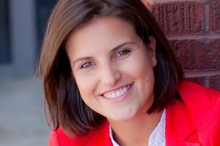
Anna Mongayt is being honored as a Champion of Change for her accomplishments as an immigrant entrepreneur and innovator.
Entrepreneurs are at the heart of many efforts to solve the world’s most pressing problems—and every entrepreneur truly believes they are capable of fundamentally changing the world for the better. No country in the world has been more supportive of the risk-taking inherent in the creation of new ventures than the United States. Between the abundance of equity capital, reliable laws, courts, and a culture that believes in rewarding big risks, there has been no better place to start a business than right here in the United States.
This entrepreneurial zeal has special meaning to me personally. I came to the United States from the Soviet Union at the age of 12. Having seen first-hand what a communist society does to personal ambition, I fully believe in the American Dream. While most of my friends pursued careers in accounting and finance upon graduation, I was determined to carve my own path and to build my own business—but like many other recent graduates, I struggled (big time).
Unfortunately, I fear we are no longer doing enough to attract our most talented minds to take a chance on themselves and build something new. Despite the nearly constant political conversation about the importance of encouraging more people to create jobs, our recent graduates are not following that path. While 54% of college graduates say they want to start their own company, the vast majority don’t. Burdened by student loans, comforted by traditional career options, or just not sure how to get started, many are choosing the “safe career path.”
Certainly, the roller coaster ride of starting a new business is not for everyone. It is a labor of love and your heart must be in it—not for the quick riches glamorized in the media, but for the lasting impact you can have on the world. However, I strongly believe that there has never been a better time to start a company. The cost of launching a business continues to decrease. Ten years ago, the cost of a customer running a basic Internet application was $150,000 a month. Running the same application today in Amazon's cloud costs about $1,500 a month, and the Internet has leveled the playing field so that very small players can reach millions of people as easily as the biggest companies in the world. With lower startup costs and a vastly expanded market, companies today can reach unprecedented scale with minimal investment.
At Upstart, our mission is to help people realize their personal potential. We believe young people need two things to make the leap into the uncertain world of entrepreneurship: funding and mentorship. We’ve created a platform that enables young people to raise money from backers who believe in their aspirations, for a portion of their future income. Investors can opt-in to become mentors and earn a return based on a regression model that predicts an individual's income over ten years. While our offering is not exclusive to entrepreneurs, this investment vehicle uniquely supports the lifecycle of an entrepreneur.
Entrepreneurs often struggle to make ends meet while investing their precious time in building their business. Then as things go well, they can see outsized rewards. By tying their payments to their income, we make sure their obligation is never too daunting. And while businesses may (and more than 60% do) fail, bright, ambitious individuals succeed over time. Upstart is a way for aspiring entrepreneurs to take some of the income they would have earned on the “safe career path” and use it to mitigate their financial risk on the “path less traveled.” Through one lens, Upstart is a way for aspiring twenty-somethings to raise capital and find mentors that can help them pursue their dreams. Through another, we are creating a whole new flavor of risk capital waiting to fuel the next generation of entrepreneurs that our economy so desperately needs.
Anna Mongayt is Co-Founder of Upstart.
Learn more about InnovationsFrom East Berlin to the Innovation Capital of the World
Posted by on June 4, 2013 at 11:03 AM EDT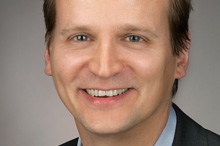
Jonas Korlach is being honored as a Champion of Change for his accomplishments as an immigrant entrepreneur and innovator.
In 1989, at age 16, I walked with my grandmother through the Berlin Wall at the Brandenburg Gate just after it was opened. The sense of freedom and possibility seemed limitless for the first time in my life. While I stayed in my home in East Berlin for a few more years to finish school, earning my B.A. and then M.S. degrees in Biological Sciences from Berlin’s Humboldt University, my interest in developing new methods and technologies for genetic research ultimately drew me to the United States.
The United States is seen around the world as a place where big ideas are welcome, and encouraged. The nation’s academic institutions and government investment in basic research are esteemed across the globe. Coupled with the enterprising drive found in this country, the U.S. is perhaps the most encouraging environment in the world for inventors, innovators, and entrepreneurs.
Ultimately, I was drawn here by the caliber of research within the nation’s university system. After participating in a high school exchange program and a few summer internships, I moved to America in 1997 as a graduate student in Cornell University’s molecular biology Ph.D. program. It was in Ithaca where I met a physics graduate student, Stephen Turner, who was interested in solving the same challenge as I was—how to observe individual enzyme molecules that synthesize DNA, the genetic blueprint of life, in real time. In collaboration with our advisors, we invented a revolutionary DNA sequencing technology, the first in the world capable of capturing real-time movies of the behavior of these minute single molecules, reading the order, or sequence, of the building blocks of DNA in the process.
With the help of many people, the current commercial product of our invention, the PacBio RS II, is a machine that is advancing the understanding of infectious disease, microbiology, agriculture, and complex genetic diseases. Based on the Single Molecule, Real-Time (SMRT) Sequencing technology we invented at Cornell, the product is the capstone of a publicly traded company that now employs nearly 300 people in the U.S. Appropriately based in Silicon Valley, our company employs a wide range of highly specialized scientists and engineers from disciplines including molecular biology, enzymology, surface chemistry, bioinformatics, nanofabrication, and optics, alongside marketing, sales, manufacturing and other staff to support our R&D and commercial operations.
Remaining here hasn’t been without its obstacles—obstacles that many of today’s foreign-born science, technology, engineering, and mathematics (STEM) graduates must overcome. I was fortunate enough to have the support of a U.S. Congresswoman who spoke up on my behalf to help me secure a temporary residency visa in 2004. But what happens to all of the bright foreign students who are not as lucky as I was? Currently, the U.S. is short on so many native-born graduate students pursuing STEM degrees that by 2018, the country is projected to have 230,000 jobs requiring graduate-level STEM training that it will not be able to fill with native-born workers. Encouraging high-skilled workers from around the world to fill these gaps not only helps them realize their dreams, but also helps support the U.S. economy and the nation’s interests in being the innovation capital of the world.
When the Berlin Wall came down, I felt like anything was possible. But it was only here in the United States where those dreams became reality. Since arriving in 1997, I have earned my Ph.D., been granted 33 U.S. patents, and helped build a company that is on the cutting edge of genetic research. In 2011, I was honored to be present as the PacBio RS was installed in a top research institution in Germany, an event that drew the attendance of VIP guest Chancellor Angela Merkel. I stood next to her, an East German herself and a physicist by training, as she insisted on being the first person to start the machine. It was a historic moment in Germany that was in part made possible by a historic moment 22 years before, when a wall came down and opened the possibilities for me to participate in the American Dream. Today I am immensely grateful for the opportunities I have been given in this country, and to be honored as a Champion of Change.
Jonas Korlach is Chief Scientific Officer of Pacific BioSciences.
Learn more about Innovations
- &lsaquo previous
- …
- 65
- 66
- 67
- 68
- 69
- 70
- 71
- 72
- 73
- …
- next &rsaquo
White House Blogs
- The White House Blog
- Middle Class Task Force
- Council of Economic Advisers
- Council on Environmental Quality
- Council on Women and Girls
- Office of Intergovernmental Affairs
- Office of Management and Budget
- Office of Public Engagement
- Office of Science & Tech Policy
- Office of Urban Affairs
- Open Government
- Faith and Neighborhood Partnerships
- Social Innovation and Civic Participation
- US Trade Representative
- Office National Drug Control Policy
categories
- AIDS Policy
- Alaska
- Blueprint for an America Built to Last
- Budget
- Civil Rights
- Defense
- Disabilities
- Economy
- Education
- Energy and Environment
- Equal Pay
- Ethics
- Faith Based
- Fiscal Responsibility
- Foreign Policy
- Grab Bag
- Health Care
- Homeland Security
- Immigration
- Innovation Fellows
- Inside the White House
- Middle Class Security
- Open Government
- Poverty
- Rural
- Seniors and Social Security
- Service
- Social Innovation
- State of the Union
- Taxes
- Technology
- Urban Policy
- Veterans
- Violence Prevention
- White House Internships
- Women
- Working Families
- Additional Issues

